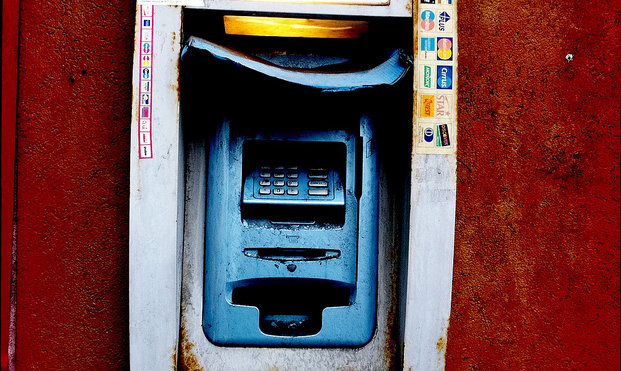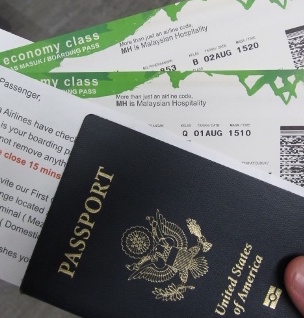The No ATM-Fee, Bulletproof Travel Financial System

Don’t let your checking account get cleaned out by ATM fraud, and don’t get robbed by the banks while traveling.
Note: This post was partially inspired by reading my new #1 favorite book on money: I will teach you to be rich by Ramit Sethi. It’s the 4-Hour Workweek for your personal finances and highly recommended!
A friend of mine once used an ATM in Honduras, and 24 hours later found her entire travel savings had evaporated. That’s right, $15,000 disappeared from her checking account. She was stranded with a credit card, $200 cash, and a promise from her bank that they would ‘look into it in the next 45 days’.*
This post outlines a simple way to make sure that never happens to you.
The Importance of Bullet-Proof Travel Finances
A few months ago I was giving my dad a lecture on the importance of bullet-proof travel finances when I realized that it wasn’t just him–most people don’t know this stuff either.
My father just retired and will be spending a lot more time abroad over the coming years (assuming he survives the PCT. Hi Dad!). But before he leaves home there are two things he needs to fix:
- Making sure his money is properly partitioned to prevent ATM theft.
- Getting a no atm fee, no foreign-transaction fee checking account.
Here are the specifics:
Don’t give ATM-thieves access to 100% of your money all at once.
Rule #1: Barricade the money you aren’t using.
While it doesn’t happen often, travelers do have their checking accounts cleaned out by ATM fraud. Don’t be that girl (or guy).
I keep my savings partitioned in several separate accounts:
- An online checking account, linked to my ATM card.
- An online savings account, NOT linked to any ATM card.
- A completely separate and backup checking account with a spare ATM card.
None of these accounts are linked to one another beyond the basic ability to transfer money through the online interface. The key is to make sure a would-be thief never has access to all of your money if they get their grubby little hands on your ATM card.
Rule #2: Don’t keep more than a bare minimum in your ATM-accessible checking account.
I don’t keep more than $1,500 in my primary online checking account at any give time. That means that in the unlikely event of theft, most of my cash is protected, locked away in the savings account.
Although my online savings account is with the same bank (CapitalOne), my ATM card absolutely provides no access to the savings account (I just called to triple check this). I have an automatic money transfer from savings => checking at the end of every month, which refills my bankroll and keeps the Benjamins flowing (joke).
The second checking account is purely backup, in case my primary ATM card gets eaten by a machine (happened to my friend once on his first day of travel), lost, or stolen. I don’t want to end up in BFE with no cash and no ATM card. You won’t die, but you are going to have a really bad day (or week)
Needless to say, my backup ATM card is hidden away from all my other documents (I tend to stuff things in all different parts of my backpack, wallet, passport pouch, and so on–it really depends on the relative danger of the place I’m traveling through).
You shouldn’t have to pay money to withdraw money.
Rule #3: Get a no ATM-fee, no foreign-transaction fee bank checking account + ATM card.
I’m astounded every time I hear someone mention ATM fees. I haven’t paid them in years because my bank reimburses the first $25 of any ATM fees (I’ve never gone over this). My backup bank–which I haven’t started using as a primary just out of laziness and habit–actually reimburses 100% of all ATM fees.
That means it costs me nothing to withdraw money, anywhere on earth, and I never spend time searching for bank-specific ATMs. If you’re still paying for access to your money you’re being swindled.
Most of my traveling has been done with an online checking account from CapitalOne. They charge no ATM fees on transactions in or out of the US (no foreign-transaction fees) and also reimburse up to $25 a month for ATM fees charged by other banks (no atm fees whatsoever). You can open up an online checking account with CapitalOne in a few minutes (note: not an affiliate link. Relax!).
The backup bank account I recently opened is with Charles Schwab (the High-Yield Investor Checking, which is sadly no longer high-yield). They have zero atm fees so this is a great option. It’s a bit of a pain to sign up for though since you have to open a brokerage account at the same time (which you don’t have to use–I’m not).
Another tip on withdrawing money on the road: to keep things as simple as possible I try to only withdraw money from ATMs once per week on a specific day. This makes it easier to keep a monthly budget (I can count how much money I have left for the week) and makes it less likely to miss a fraudulent ATM transaction when I review my bank statement at the end of the month.
So in conclusion, if your bank is charging you for using an ATM or any kind of international withdrawal fee, it’s time to get a new one.
Simple yes, but important steps to keep your money safe on the road.
As a connoisseur of sketchy ATMs around the world (El Salvador, anyone?) I find it comforting to know that in the event of theft I’m not going to lose it all at once.
And don’t let ATM and foreign-transaction fees can eat away at your travel budget. Unnecessary fees add up and there are plenty of fee-free options these days.
None of this is overtly complicated, but a few simple steps are enough to prevent disaster. It will take a few weeks to get this all setup so I’d recommend planning in advance of travel (unless your father happens to bring you a stack of mail every 6 months, wherever you happen to be–thanks dad!).
So there you go pops, get it done, and safe travels!
[Photo Credit – via Flickr under CC License]*My friend got all her money back in the end, it just took a while.




